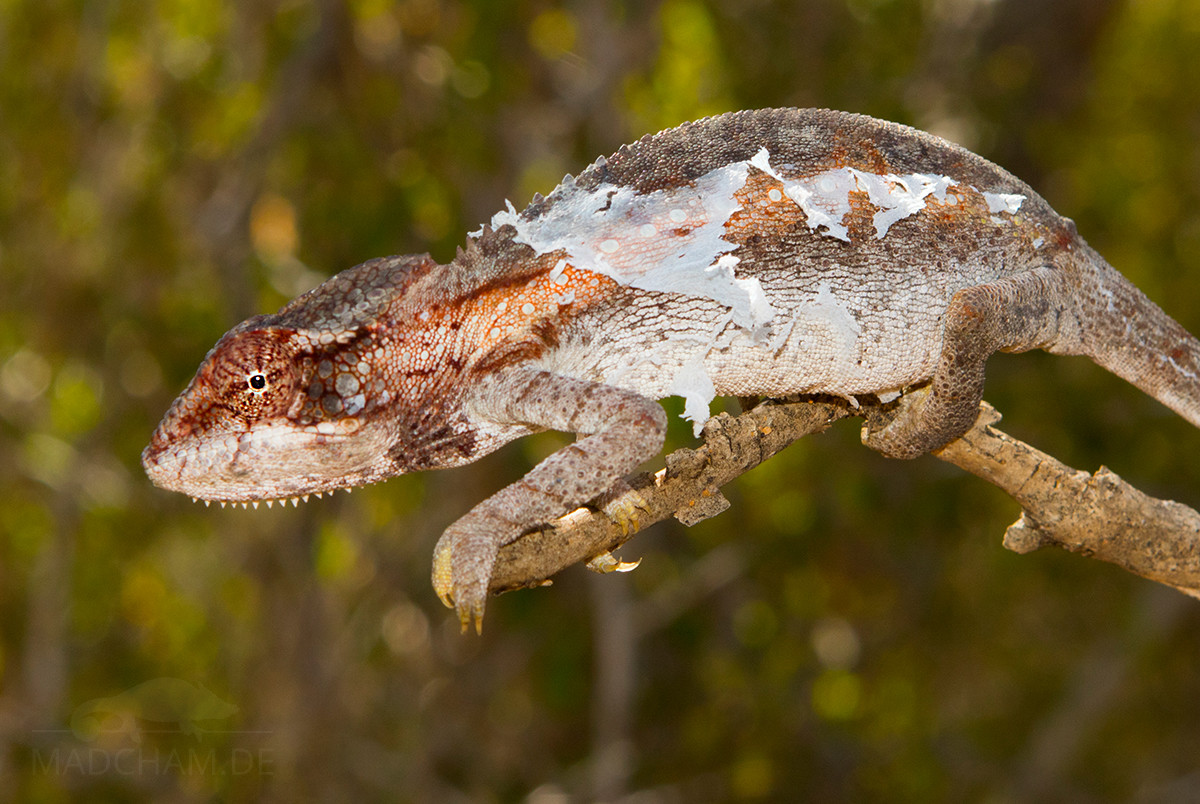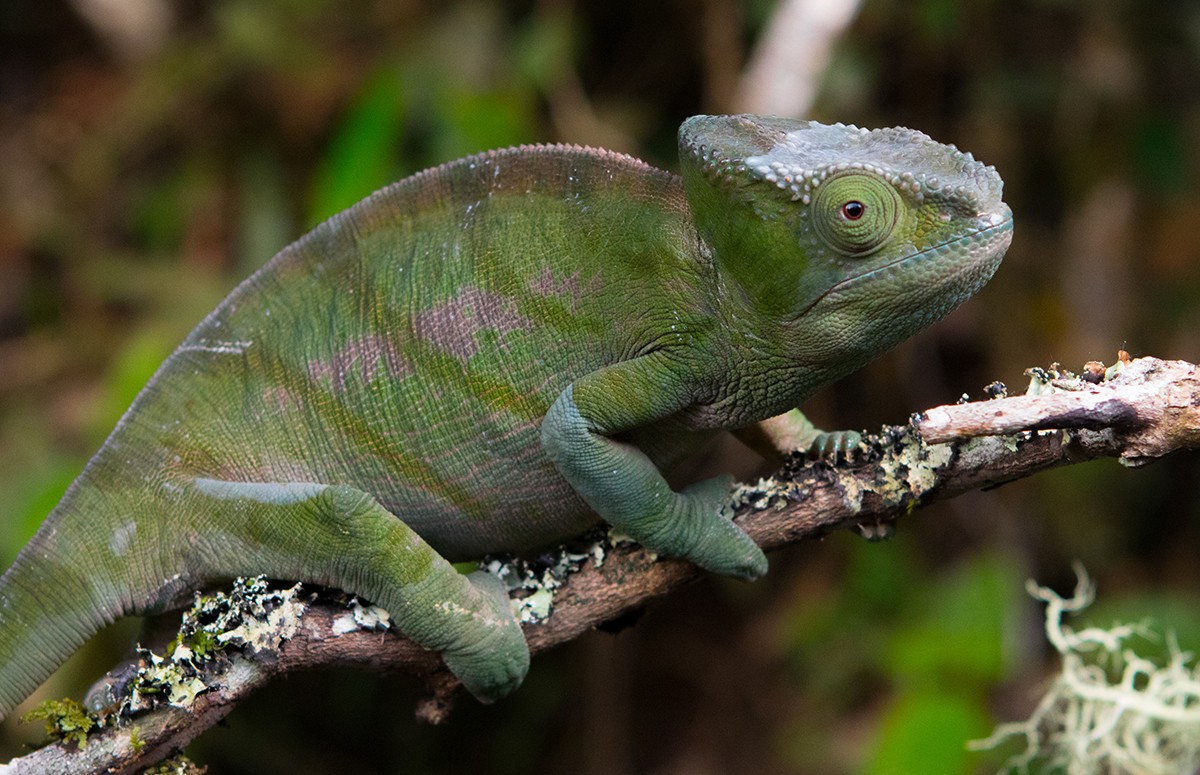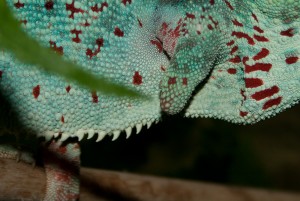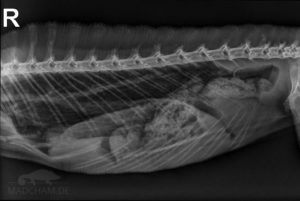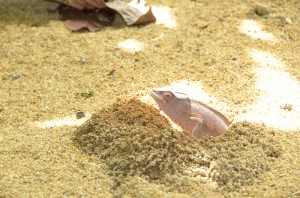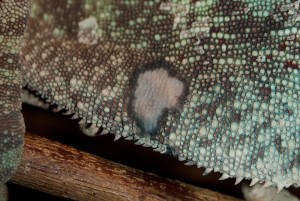Shedding problems
A shedding problem means that the chameleon has shed almost completely, but some pieces of the old skin have been remaining for days. The old skin looks milky in this area or the shedding residue simply sticks to the new skin. Areas where this mostly happens are the underside of the tail, toes and claws, and especially the dorsal crest. On the latter, single scales may often remain like sleeves.
Predicament
For chameleons, a shedding residue may become dangerous when an arm, a leg, a toe, or the tail is surrounded completely. If this residue is not removed manually, it will dry out and shrink, while the chameleon continues growing. The ring-shaped shedding residue constricts the living tissue and cuts off blood supply, so the tissue behind the ring will die. In the worst case, a chameleon can lose an extremity or its tail due to this process.
Additionally, a shedding residue offers an ideal breeding ground for bacteria and fungus with the small gap between old and new skin that is always a little humid a pretty warm under the cage’s heat lamps. Sometimes the keeper has already tried to pull off a flap of old skin, and unintentionally placed tiny skin lesions where bacteria can enter the skin.
Causes
- Poor husbandry:
Permanently too low humidity in a cage or temporarily during shedding makes the skin dissolve worse. Constantly too low temperature or lack of sunbathing places can also produce very rare or long-lasting sheddings. As ectotherm animals, chameleons rely on places where they can warm up, otherwise, their metabolism and also the shedding process will not work well. - Injuries, scars, and infections:
Injuries do not shed or rather worse. If infected additionally with bacteria or fungus, the affected area cannot shed normally. Scars left of healed wounds or burnings may lead to shedding problems due to the altered skin structure. - Lack of vitamins:
A lack of vitamins can lead to shedding problems among others. Supplementation should be controlled for quality and suitability. Please do not simply increase the amount of vitamin supplementation! This may easily go wrong. If you assume a lack of vitamins, consult a reptile experienced veterinarian and let the vet control your suspicion, if necessary treat it. - Disease:
An already existing disease e.g. parasites, gout, or metabolic bone disease may lead to a worsening general condition of a chameleon, so it sheds worse, too. Chameleons that are recovering from a disease also tend to develop shedding problems.

A Furcifer pardalis male in Maroantsetra with shedding problems due to an inflammation of a bite wound in the left arm
Therapy
- Increase humidity:
In the case of small shedding problems, the first intervention should be to control the cage’s humidity. Too low humidity may result in sluggishly shedding, the old skin won’t dissolve properly. Even under good conditions, increasing humidity and spraying more may help during shedding. - Lukewarm water and cotton swab:
If a skin area with shedding residue has not changed for days, you can moisten the skin and soak it with lukewarm water and a cotton swab. After some minutes, you can gently try to push away the old skin with the cotton swab. Always be careful, do not use your fingernails, and do not scratch with sharp materials! Even if the old skin won’t dissolve, do not pull the old skin by force! If the old skin has been stuck to the new beneath or not completely loose yet, you can easily injure the thin skin.
Please do not apply creams, ointments, oils, vaseline, or anything else on shedding residues! Although many people give this advice, all this stuff makes the skin stick together more than that they do any help. Additionally, they improve the environment for bacteria and fungus, which means they even support an infection instead of preventing it. Many micro lesions cannot be seen with the naked eye, and with oils or chamomilla creams you only irritate the skin and prolong healing.
When is it time to see a vet?
If a shedding residue remains for a longer time, you should visit a reptile experienced veterinarian with your chameleon. Any skin areas that look sticky, have changed color or “look somewhat odd” or suggest any other suspicion of bacterial or fungal infection, should also be examined by a reptile vet. And of course, old shedding residues consisting of several skin layers already or beginning to constrict tissue are a case for the vet, too.
The vet will carefully remove the old skin layer, then clean and treat the damaged new skin beneath or wounds that have developed in the affected area. In case of suspicious skin areas, your vet will do a swab of the skin to identify gems and find the right medication for your chameleon.

